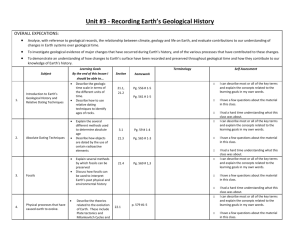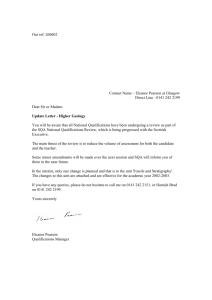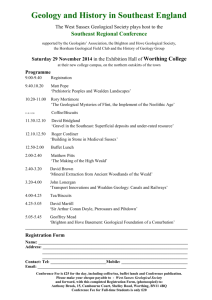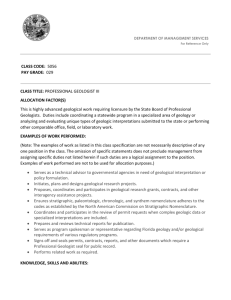Paleontology
advertisement
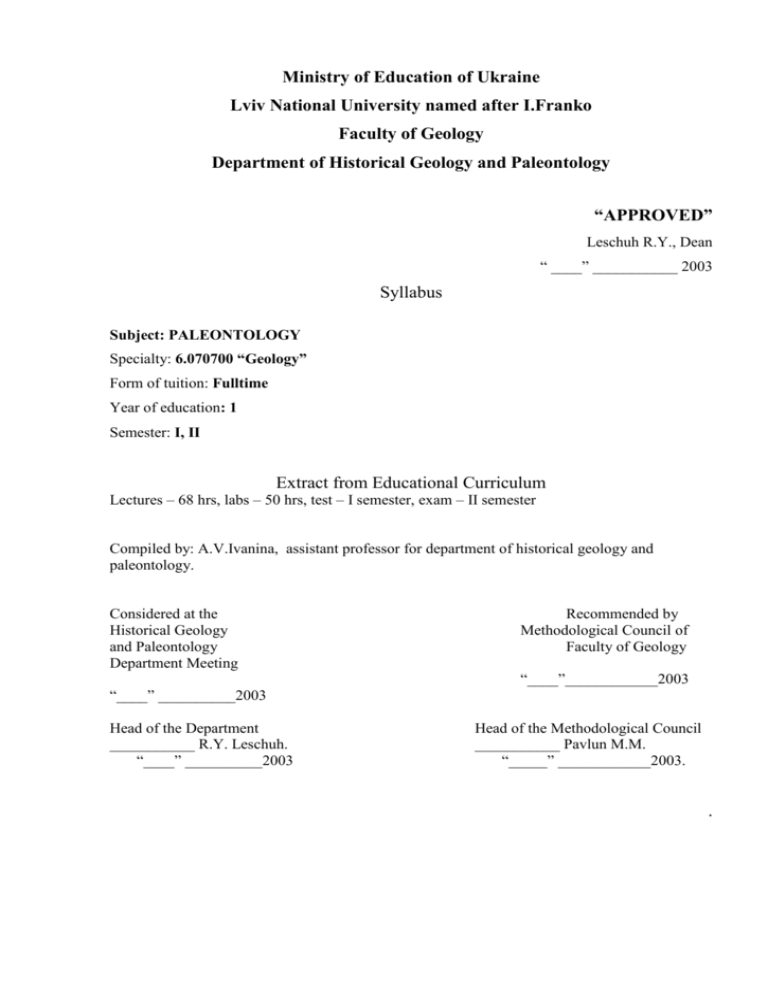
Ministry of Education of Ukraine Lviv National University named after I.Franko Faculty of Geology Department of Historical Geology and Paleontology “APPROVED” Leschuh R.Y., Dean “ ____” ___________ 2003 Syllabus Subject: PALEONTOLOGY Specialty: 6.070700 “Geology” Form of tuition: Fulltime Year of education: 1 Semester: I, II Extract from Educational Curriculum Lectures – 68 hrs, labs – 50 hrs, test – I semester, exam – II semester Compiled by: A.V.Ivanina, assistant professor for department of historical geology and paleontology. Considered at the Historical Geology and Paleontology Department Meeting Recommended by Methodological Council of Faculty of Geology “____”____________2003 “____” __________2003 Head of the Department ___________ R.Y. Leschuh. “____” __________2003 Head of the Methodological Council ___________ Pavlun M.M. “_____” ____________2003. . № 1. 2. Topic and brief contents of the course Number of hours lectures 4 4 General definitions. Biosphere and its characteristics. Forms of concentration of life. Peculiarities of distribution of live components in biosphere. Process of transformation of residues of organisms into fossils. Taphonomic cycle. Classification of fossils. 3. Subject and tasks of paleontology. Stages of development of paleontology. Tasks and objects of paleontologic research. Structure of paleontology. Main rules and principles of systematization of fossils. 4. 1. Systematic part. 2. General characteristics, way of living and conditions of existence, principles of classification and systematization, geological history, geological role of Sarcodina type. Foraminifera class, Radiolaria class. 5. Primitive multicellulars. Spongiata type. General characteristics, structure and contents of skeleton, principles of division into classes, characteristics of classes: Hexactinellida, Demospongia Calcispongia Type Archaeocyathi. Characteristics of skeleton, principles of systematization, history and geological importance 6. Superdivision Eumetazoa. Division Radiata. Type Cnidaria. General characteristics, classification, comparative characteristics of classes Hydrozoa, Scyphozoa, Anthozoa. Systematization of class Anthozoa. Subclasses Tabulatomorpha, Tetracoralla, Hexacoralla, Octocoralla. 7. Division Bilateria. Type Annelida, general charcteristics, geological role, importance of understanding for origination of segmented worms. 8. Type Arthropoda, general characteristics, origin, principles of division into subtypes and classes. Subtype Trilobitomorpha. Class Trilobita. General characteristics systematization, geological history and role. Subtype Crustaceomorpha. Class Crustacea. Characteristics of ostracods and phylopods. Subtype Chelicerata. Class Merostomata, subclass Eurupteroidea. Subtype Tracheata. Class Insecta. 9. Тype Mollusca. General characteristics, principles of systematization, geological history. Structure of the body, muscles, way of living, systematization of class Gastropoda. Class Bivalvia. General characteristics, structure of skeleton, systematization, geological history. Class Cephalopoda. Classification and characteristics of subclasses, geological role and history. Class Tentaculita. Peculiarities of skeleton structure. 10. Type Bryozoa. General characteristics, geological role, classification. 11. Type Brachiopoda. Peculiarities of structure and characteristics of classes Inarticulata and Articulata. practicum 3 4 3 4 3 5 3. 3 5 4 5 4 4 3 5 3 4 3 4 3 4 3 12. 13. 14. 15. 16. Type Echinodermata. Structure of skeleton and characteristics of most important classes Cystoidea, Blastoidea, Crinoidea, Echinoidea. Type Hemichordata. General characteristics, structure and geological importance. Class Graptolithina. Type Chordata. Main feature, origin, division into subtypes. Characteristics of class Conodonti, morphology of conodont elements. Geological role of conodonti. Characteristic and systematization of subtype Vertebrata. Division into infratypes, superclasses and classes. Geological history and evolutionary role. Origin and development of human beings. Kingdom of plants. Peculiarities of structure, systematization, characteristics of stages in development of flora world. 4 3 4 3 4 3 4 3 Characteristics of development of organic world. Ways and 4 laws of evolution of organic world. Organic world of Archean, Proterozoic, Phanerozoic periods, and eras. 3

